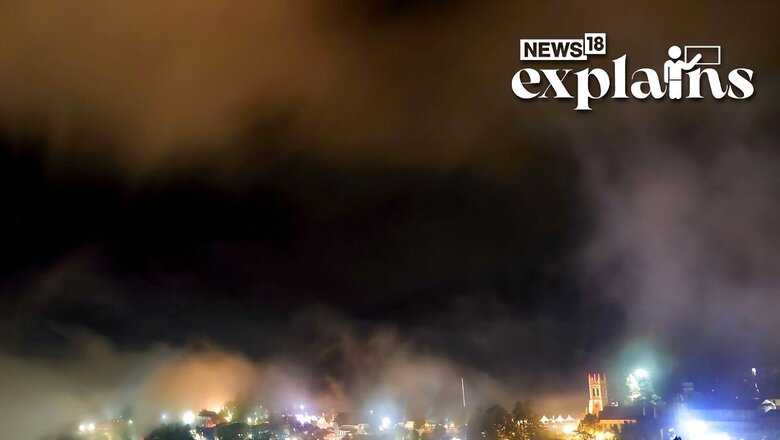
views
Schools and colleges were shut down after unprecedented monsoon rains caused widespread waterlogging, road collapses, house collapses, and severe traffic congestion in north India. Over a period of two weeks, more than 100 people lost their lives in these calamities. The state of Himachal Pradesh was the hardest hit, with 88 fatalities, including 42 in the last five days, and over 100 people injured, as per a report by Associated Press.
Swirling floodwaters swept away cars, buses, bridges, and houses in the mountainous region, located approximately 500 kilometers north of New Delhi.
What is the situation like? Let’s take a look:
In Uttar Pradesh, twelve people died due to rain-related incidents, including drowning, lightning strikes, and a snake bite, as per the report. Additionally, one person died in New Delhi, and four lost their lives in Kashmir. Efforts were made to rescue approximately 300 stranded individuals, primarily tourists, in the Chandertal area of Himachal Pradesh, with helicopters being deployed for the operation.
The heavy rains and landslides caused the collapse of nearly 170 houses, while around 600 other houses suffered partial damage in Himachal Pradesh. In New Delhi, residential areas near the Jamuna River experienced flooding, resulting in the evacuation of thousands of residents from low-lying regions. The rising water levels in the river, reaching a 40-year record, disrupted vehicular movement during the morning rush hour.
To provide relief, authorities have relocated nearly 30,000 people to relief camps, converted some schools into relief shelters, and allowed hundreds of individuals with their livestock to take shelter under overhead road bridges in eastern parts of New Delhi. The Chief Minister of Delhi, Arvind Kejriwal, attributed the rise in the river level to excessive water discharge from the Hathni Kund barrage in the neighboring state of Haryana.
What Does IMD Say?
The Indian Meteorological Department has forecasted further heavy rains in northern areas in the upcoming days. The country has already received about 2% more rainfall than normal during the current monsoon season, which lasts from June to September. While the monsoon rains are essential for rain-fed crops, they often result in extensive damage and severe flooding in India.
What is Causing This?
According to Mrutyunjay Mohapatra, the Director-General of IMD (India Meteorological Department), the recent heavy rainfall in several north Indian states was a result of the interaction between the western disturbance and the southwest monsoon, according to a report by the Weather Channel. He noted that there is an increasing trend of very heavy and extremely heavy rainfall events globally, including in India, due to the changing climate scenario.
Madhavan Nair Rajeevan, the former secretary of the Ministry of Earth Sciences, told the website that while multiple factors contributed to the extreme weather phenomenon in northern India, a similar weather pattern was observed in Uttarakhand in 2013. However, he emphasized that there has been a shift in the climate context, with a significant amount of rainfall occurring in shorter time periods. He attributed this change to rising temperatures, global warming, and increased frequency of heavy rainfall events.
Dr. Roxy M. Koll, a scientist with the Indian Institute of Tropical Meteorology told the Weather Channel that the monsoon patterns in India have been shifting due to climate change. There have been periods of deficit rainfall followed by short bursts of heavy to extremely heavy rains in recent years. This pattern has been observed in Punjab, Himachal Pradesh, Delhi, and Uttarakhand, where nearly a month’s worth of rainfall has been received in just 24-48 hours.
Dr. Koll explained that global warming and warmer oceans lead to increased moisture in the air, which the southwest monsoon carries. However, instead of the moisture being spread out throughout the season, it results in short, intense spells of rainfall due to climate anomalies.
Dr. Akshay Deoras, a scientist from the University of Reading, described the recent weather events as unusual and unique for July, as per the report. He noted that the frequency of such events in July is typically lower compared to June or October. Although it cannot be definitively stated that climate change caused the convergence of these weather systems, there is a tendency for extreme events to be amplified due to climate anomalies.
Dr. Deoras predicted that intense downpours and prolonged rains would increase in the coming years, leading to disastrous floods, landslides, and extensive devastation. These events are expected to disproportionately affect marginalized communities and vulnerable populations.
Associated Press contributed to this report




















Comments
0 comment